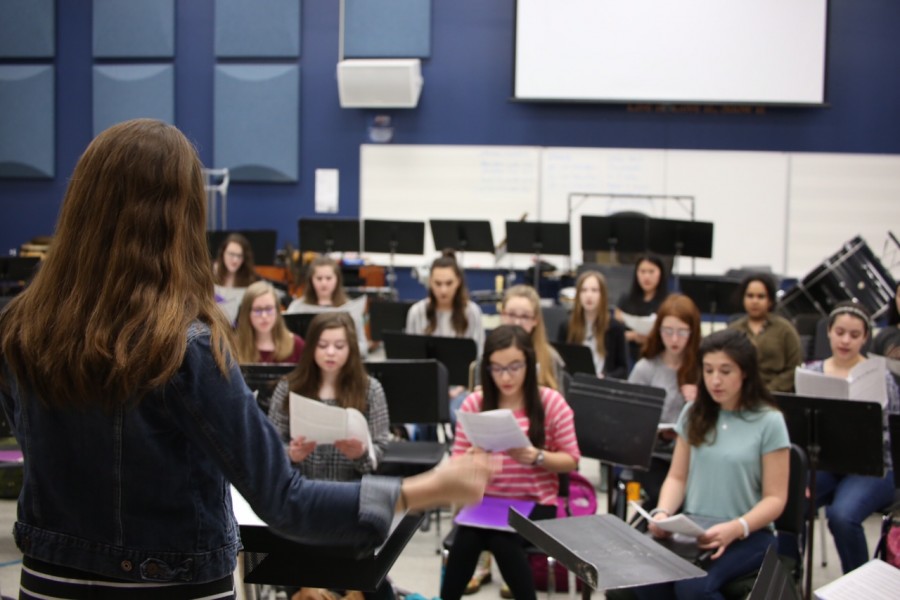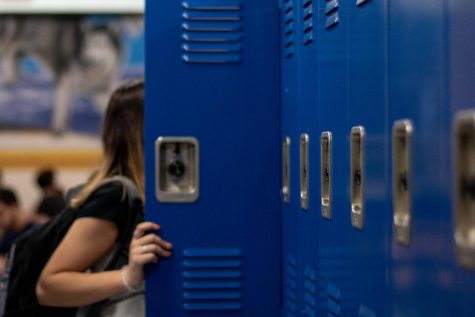Hitting your stride: advice for college-bound musicians
A crucial component of your audition is the repertoire you choose to present to the panel. Often, students are unsure of how to go about choosing the right pieces and then preparing them appropriately.
It’s never too early to start thinking about what pieces will work for your audition. According to Dr. Jennifer Barnickel-Fitch, DMA and voice teacher at College of Dupage, junior year is the time to start. She recommends learning solo and ensemble competition pieces, putting them away for a bit and then pulling them back out later.
“That way, the notes are learned, it’s been performed and you’ve worked the technique through it,” Fitch said. “Typically, after you’ve had a rest from it, you bring it back out and it’s even better.”
Fitch said the emotional qualities become a priority after taking a break from the pieces.
The average undergraduate voice program will ask for two pieces: one in English and another in a foreign language. However, be advised that some schools may ask for more.
The best way to be prepared is to choose one piece in each of the main languages–Italian, French, German and English–according to Fitch. Although this tends to be the standard amongst schools, it is imperative to check all the requirements with each individual school.
A lot of young singers will want to walk into their auditions with an aria–a big solo in an opera. They’re usually harder and longer than art songs, which are classical pieces that aren’t from an opera. There are a lot of reasons why walking into an audition with an aria piece may be a disadvantage. First off, some schools won’t even allow you to sing an aria at an undergraduate audition, according to Fitch. But beyond that, arias are hard, and most high school level musician aren’t ready for many of them.
Although most students don’t audition with arias now, many attempt to learn them early in their career. By learning an aria piece in high school, young musicians can build muscle memory. Years later, when someone wants to pay a musician to sing those arias, they can approach them with more confidence.
But in a college audition, it isn’t about being super “showy.” A student may sing all the notes and rhythms correctly but may not have the correct technique. As an undergrad, there is nothing wrong with an audition composed of art songs. Musicians should show colleges what they can do well and what they feel comfortable with.
After students have an idea of what kinds of pieces they need for auditions, the next step is selecting music.
The process of music selection can be a bit complex. At this point, a young musician should have a private voice teacher. Their voice teacher should be helping them pick pieces out, especially since most voice teachers have a degree and a lot of experience. Nevertheless, it doesn’t hurt for a student to start looking for music on their own. It is important to pick pieces that showcase the unique qualities of a musician’s voice. You want to show the faculty what you can do, not what you can’t do.
It’s also crucial to pinpoint what you’ve mastered and include those skills in the pieces you choose. Is it a beautiful legato, or a piece that is more staccato? What about something slower or faster? Also, consider what emotional qualities to connect with.
Of course, enjoying the pieces chosen is beneficial. Music is all about passion, so showcasing passion can only help. The faculty will be able to tell if a student doesn’t like their piece, and that certainly won’t leave a very positive impact.
By following these guidelines, getting started in the process of choosing the right audition repertoire will hopefully be less confusing.
Stay tuned for part two.










